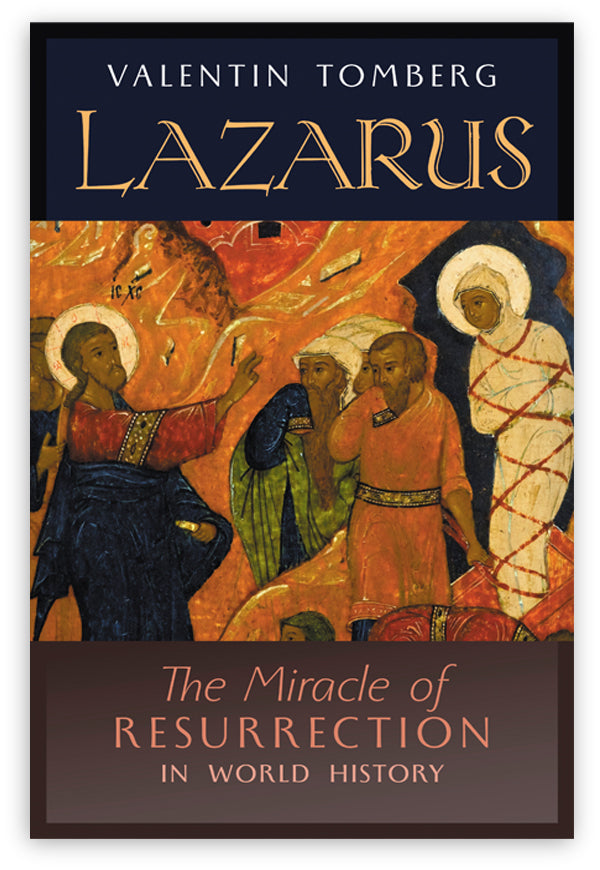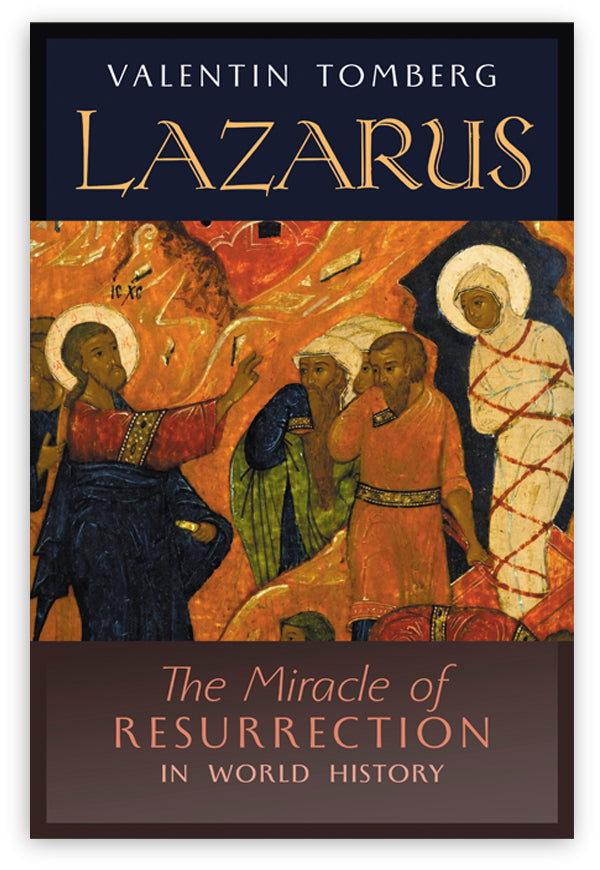About the Book
This final masterwork of Valentin Tomberg (1900–1973) consists of three parts. Part I, “The Seven Miracles of John’s Gospel,” probes deep correlations between the 7 Healing Miracles, the 7 Days of Creation, and the 7 Sacraments. Part II, “The Miracle of the Raising of Lazarus,” juxtaposes the mysteries of forgetting, sleep, and death, with those of remembering, awakening, and resurrection, as a prelude to the eternal words: “Lazarus, Come Forth!” Part III, “The Miracle of Lazarus in Divine-Human History,” leads to the “blinding insight” that Christianity is nothing other than the ongoing resurrection of the totality of Divine-Human History, the Ecclesia universalis.
“This book throws a new and surprising light on the history of humankind. The seven days’ labor depicted in Genesis is, for the author, no mere myth; rather, from a depth of thought all his own, Tomberg opens up a path by means of which our modern consciousness can understand the continuing significance of Moses’ account for us today. Here the Fall, into which the seven days of the Creation were drawn, serves as the backdrop against which the seven healing miracles depicted in John’s gospel may be fathomed in an entirely new way—for these miracles are not related solely to those individuals alive in Palestine in Jesus Christ’s time, but also to the seven days of the Creation, and thus to the whole history of the world and of humanity. Thereby the resurrection of Lazarus—described as if the author had himself been present at it—takes on a far wider significance. For by virtue of this miracle, human history is no longer merely a process (whether linear or cyclical) heading towards an uncertain future, but is instead also a course of events impelled by the ‘night side of history’ which breaks in upon the ‘day side of history’ with the aim of healing and resurrecting everything precious in it (even if abandoned for a time to transience, dying, and death) into new and everlasting life. Tomberg thus delineates a fascinating and hopeful perspective, and one that is of exceptional relevance to our own time.”
—MICHAEL FRENSCH
translator of Meditations on the Tarot into German, biographer of Valentin Tomberg
“First with Meditations on the Tarot: A Journey into Christian Hermeticism, now with Lazarus: The Miracle of Resurrection in World History, Valentin Tomberg opens new paths into Catholic contemplation and shows, in his capacious generosity of soul, that the Catholic mystery is not condemned to only reifying the Patristic, Medieval, and Early Modern iterations of the faith, but also speaks to the future. Or, rather, the future—the domain of the Parousia—speaks to us in the present. This essential text presages a new dawning of Catholic thinking and contemplation.”
—MICHAEL MARTIN
author of Sophia in Exile, etc., editor of Jesus the Imagination
“It is no accident that the last verse of John’s gospel says that if all Jesus’s deeds were to be described, ‘even the world itself could not contain the books that should be written.’ To many a person this book may well be of assistance in imagining the infinity of those possible books—since it is itself one of them.”
—ROBERT SPAEMANN
Catholic philosopher, author of Love and the Dignity of Human Life, etc.
‘Robert Powell’s 1985 translation of Meditations on the Tarot provided English-language readers with a spiritual masterpiece. As a concentrated well-spring of prayer, meditation, contemplation, and imagination, it is virtually impossible to exhaust. Readers who experienced the magnum opus on Christian Hermeticism as a life-changing event were more-than-open to additional works by the same author, once so humbly serving under the time-honored tradition of anonymity.
Soon, however, and to my mind, sadly, the author’s identity became widely known. In that light, the first 1992 English language edition of a series of additional meditative essays by the same author (widely known by then as the Catholic convert Valentin Tomberg) were gathered together under the rubric of Covenant of the Heart, translated by the collaborative effort of Robert Powell and James Morgante. This volume was a great gift to the world and circulated quietly but powerfully. The second English language edition of 2006 presented the same material in a new format retitled as Lazarus, Come Forth. Whether as Covenant or as Lazarus, this work on the seven miracles in the Gospel of St John, the Raising of Lazarus, the Ten Commandments, the Kingdoms of Nature, and a few fragments covered new ground. It must have accompanied many Christians on silent retreats and especially as a form of Lenten prayer. And good news abounds! This third edition features major and minor changes, some related to the subtle nuances of translating; some related to the subtle art of layout and structure; some related to the framing and titling of the four sections and their several chapters; some to the very helpful supplements. All of these revisions contribute to the reader’s ability to enter the content as a living organism. The new title speaks worlds: LAZARUS: The Miracle of Resurrection in World History. This astonishing work of prayerful and linguistic insight is coupled with imagination and love. Newly translated from the German by James Wetmore, Tomberg took very strong stances on matters of the institutional Church’s ability to speak truth in its elucidation of dogma. That may seem at first as something old-fashioned. But wait! Given the challenging history of the most recent institutional crisis in the Roman Catholic Church, Tomberg’s insights about twin seeds of Hindu and Buddhist eremitic life, and insights about Platonism and Aristotelianism as well as the Lutheran legacy come as nothing less than new life. Here we hold a work in which Resurrection born of love speaks to a Christianity which is lived, embodied, ensouled, and remembered in the awakened intelligence of the heart. Surely this work speaks to a covenant worth cherishing!”
—THERESE SCHROEDER-SHEKER
The Chalice of Repose Project
“Valentin Tomberg was an extraordinary scholar of spiritual history, connecting the Judeo-Christian tradition with esoteric Christianity. The depth of the insights presented in this book are astonishing.”
—HARRIE SALMAN
biographer of Valentin Tomberg, author of The Great Reset
Valentin Tomberg was born in St. Petersburg on February 26, 1900. Having been baptized a Protestant, he entered the Greek Orthodox church shortly before 1933, and, in 1945, became a Roman Catholic. In 1938 Tomberg emigrated to the Netherlands and began actively to lecture on Christological topics. At the beginning of 1944 he moved to Cologne, where he was awarded the title of Doctor of Law for his dissertation, The Art of the Good: On the Regeneration of Fallen Justice, published in English for the first time by Angelico Press. This dissertation marked an important turning-point in Tomberg’s life: humanistic studies he had presented during his thirties are now replaced by a strict orientation towards a Platonic model of knowledge, and a medieval, so-called “realism of universals.” Tomberg came to regard the modern path away from natural law (founded upon religion) and toward legal positivism (oriented toward power) as a dismantling of the different levels of law (and at the same time a loss of both the idea and ideal of law)—that is, as a process of degeneration or “fall,” which Tomberg seeks to reverse in the direction of regeneration. He also proposes a new way of organizing the academic study of law, in which the higher levels of law would be included, and in which access to the idea and the ideal of law would be restored.


